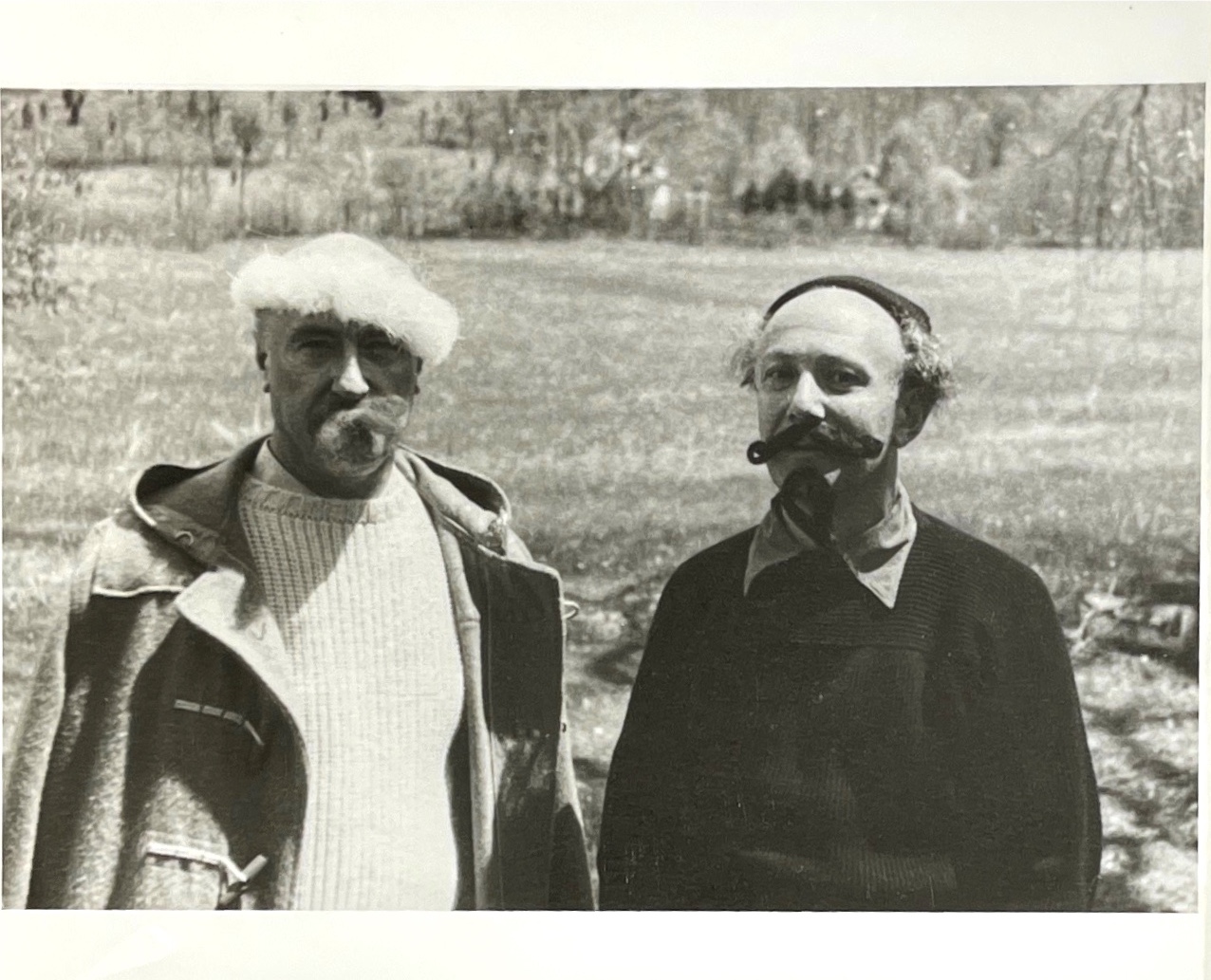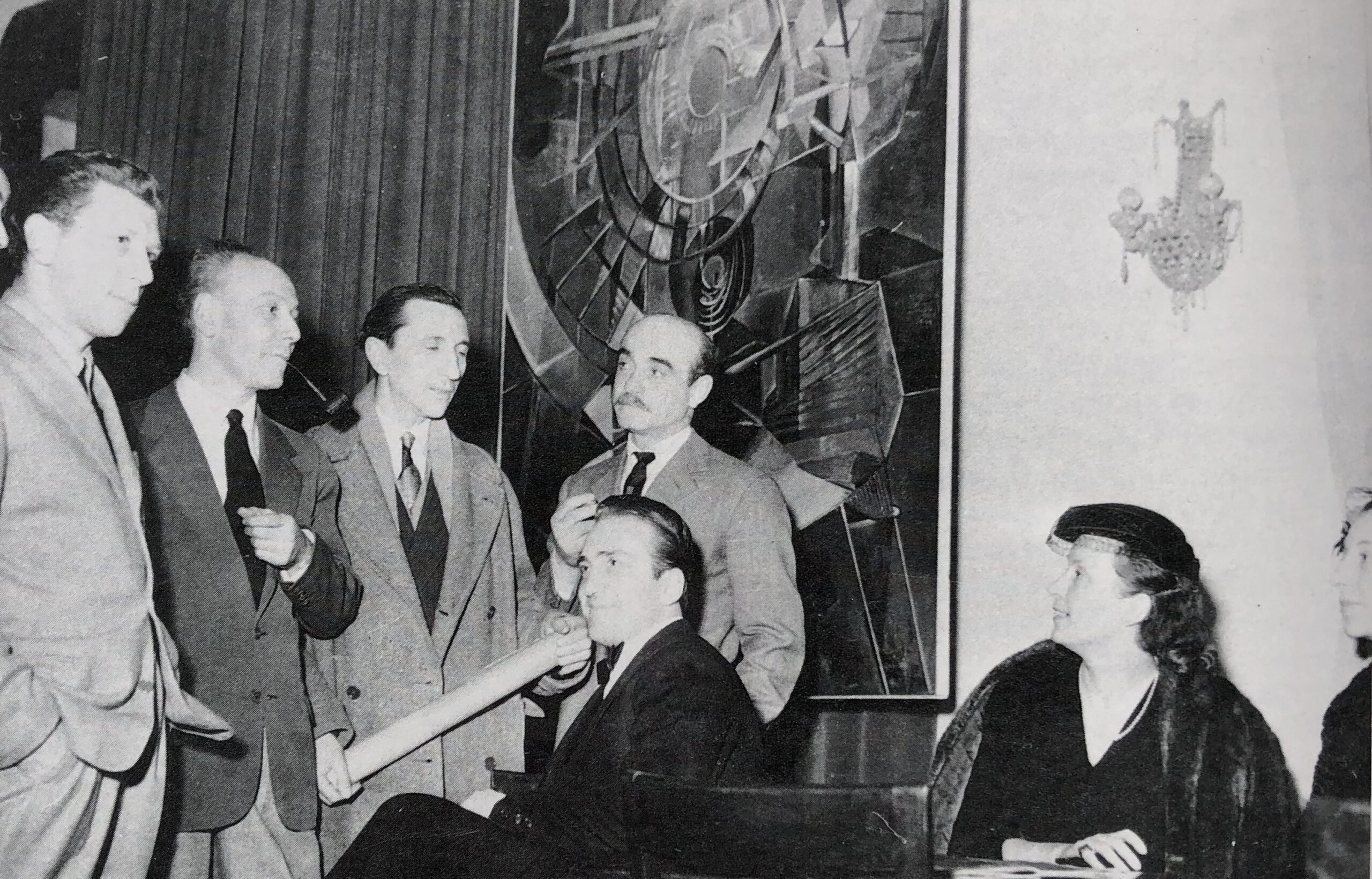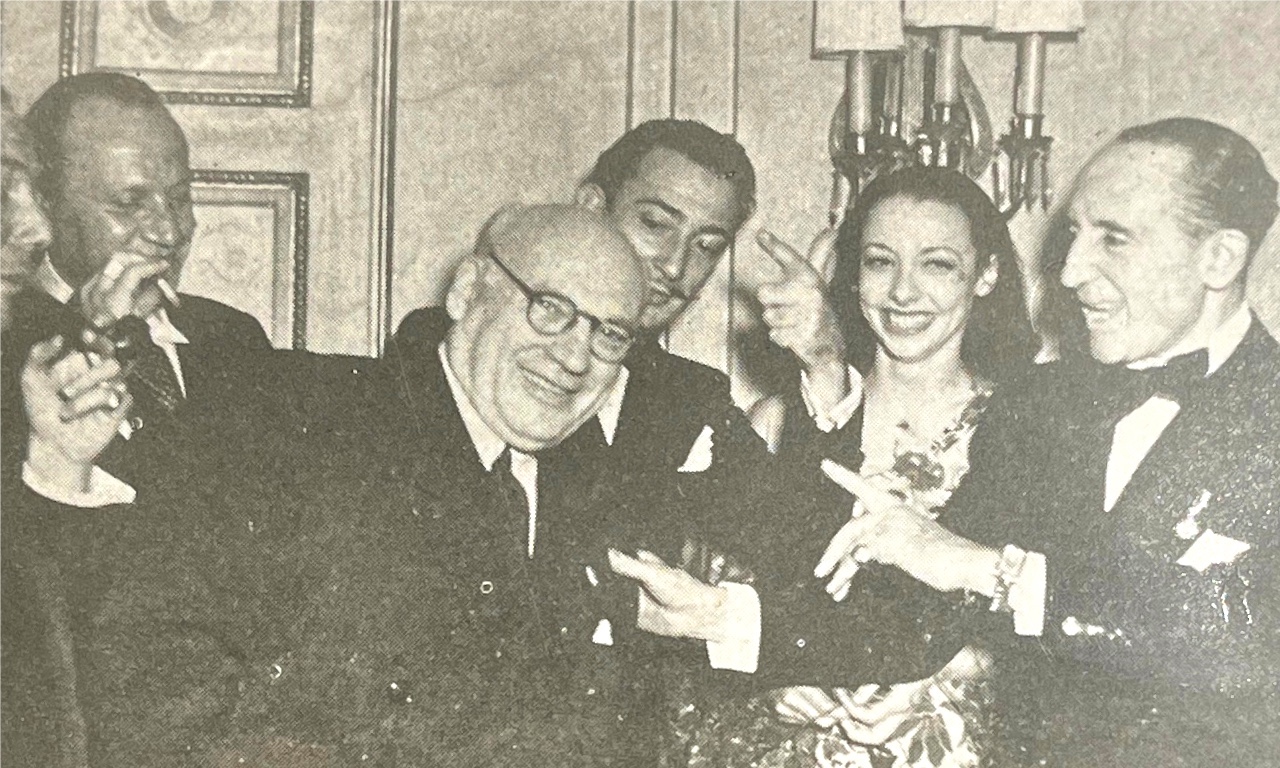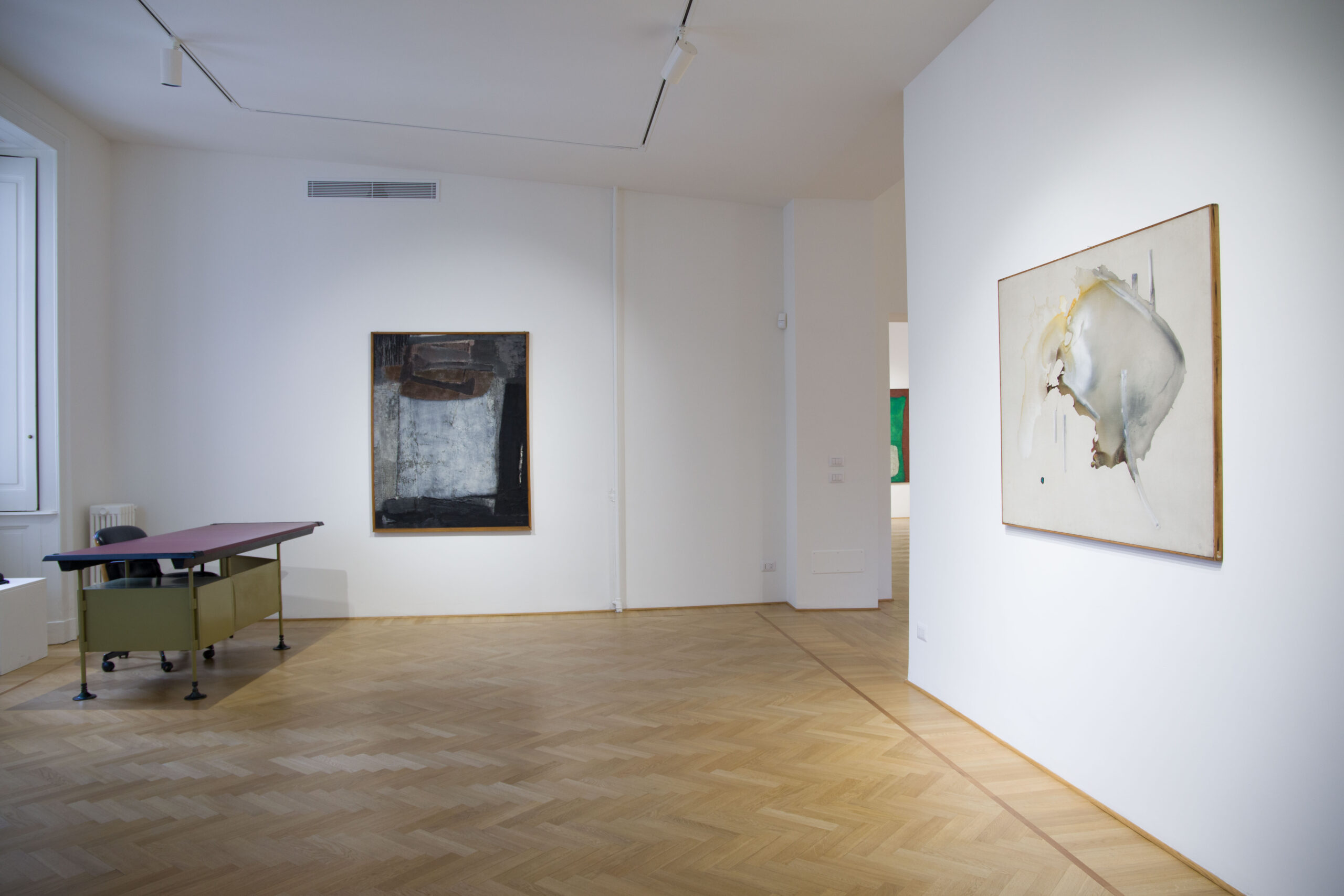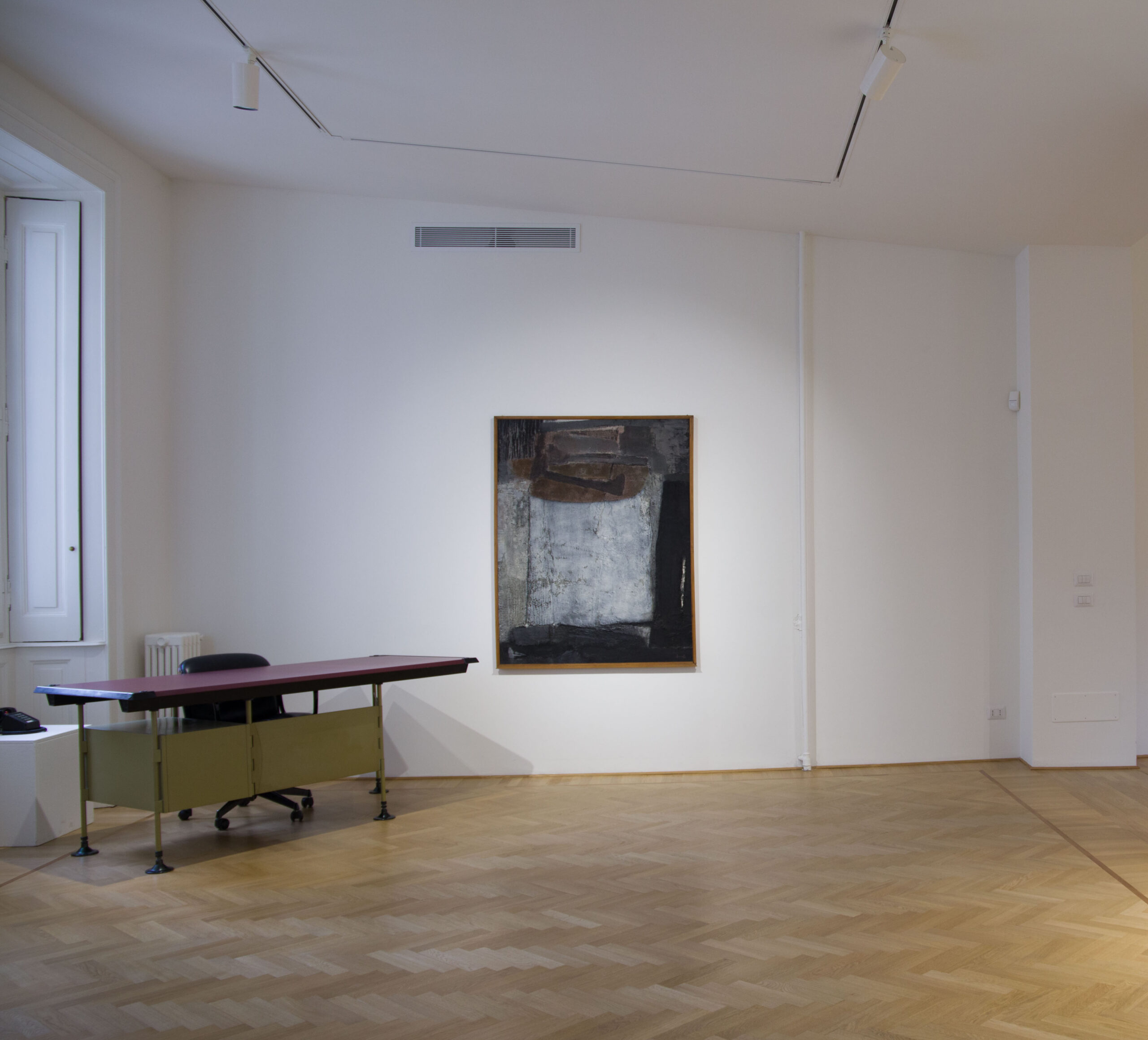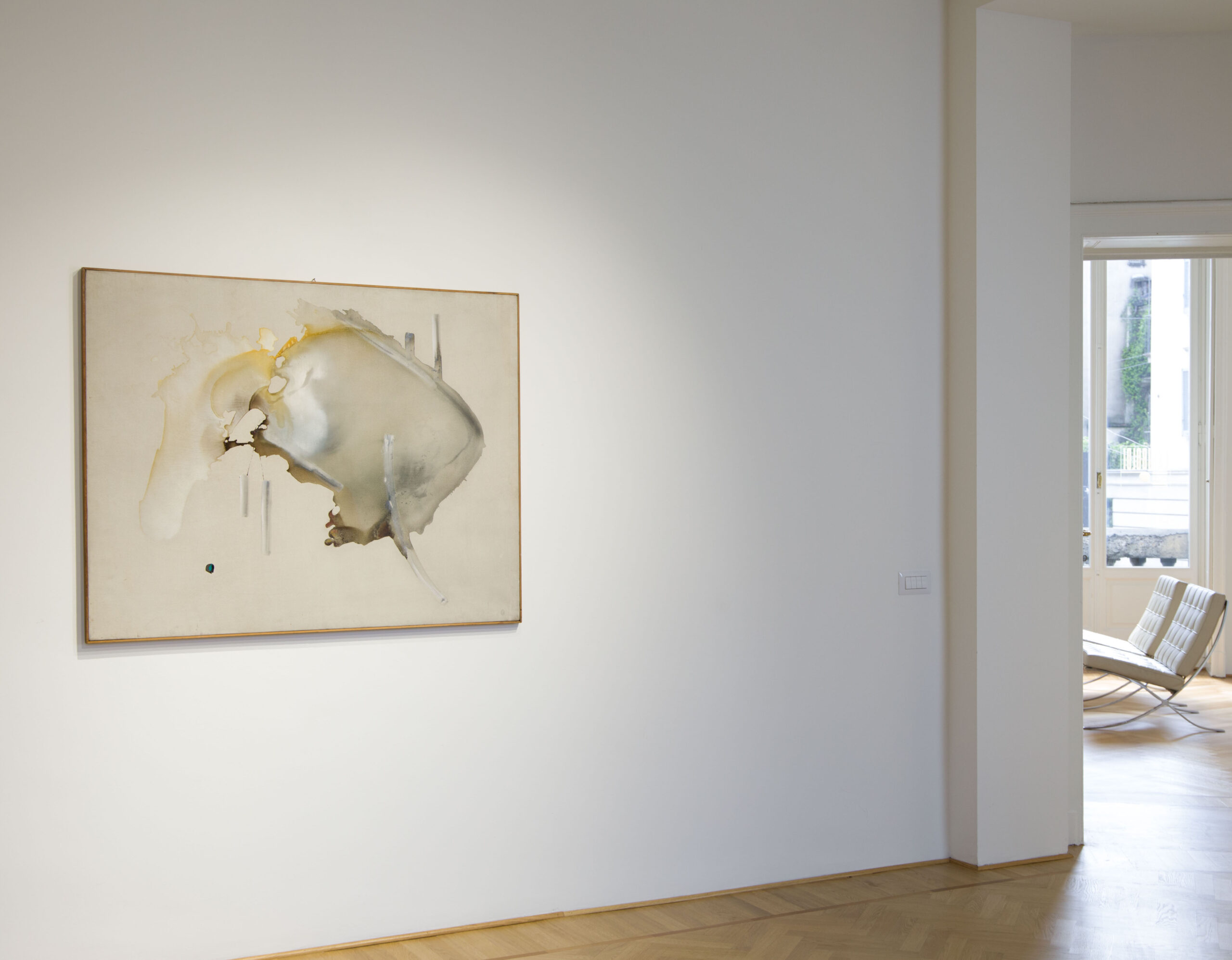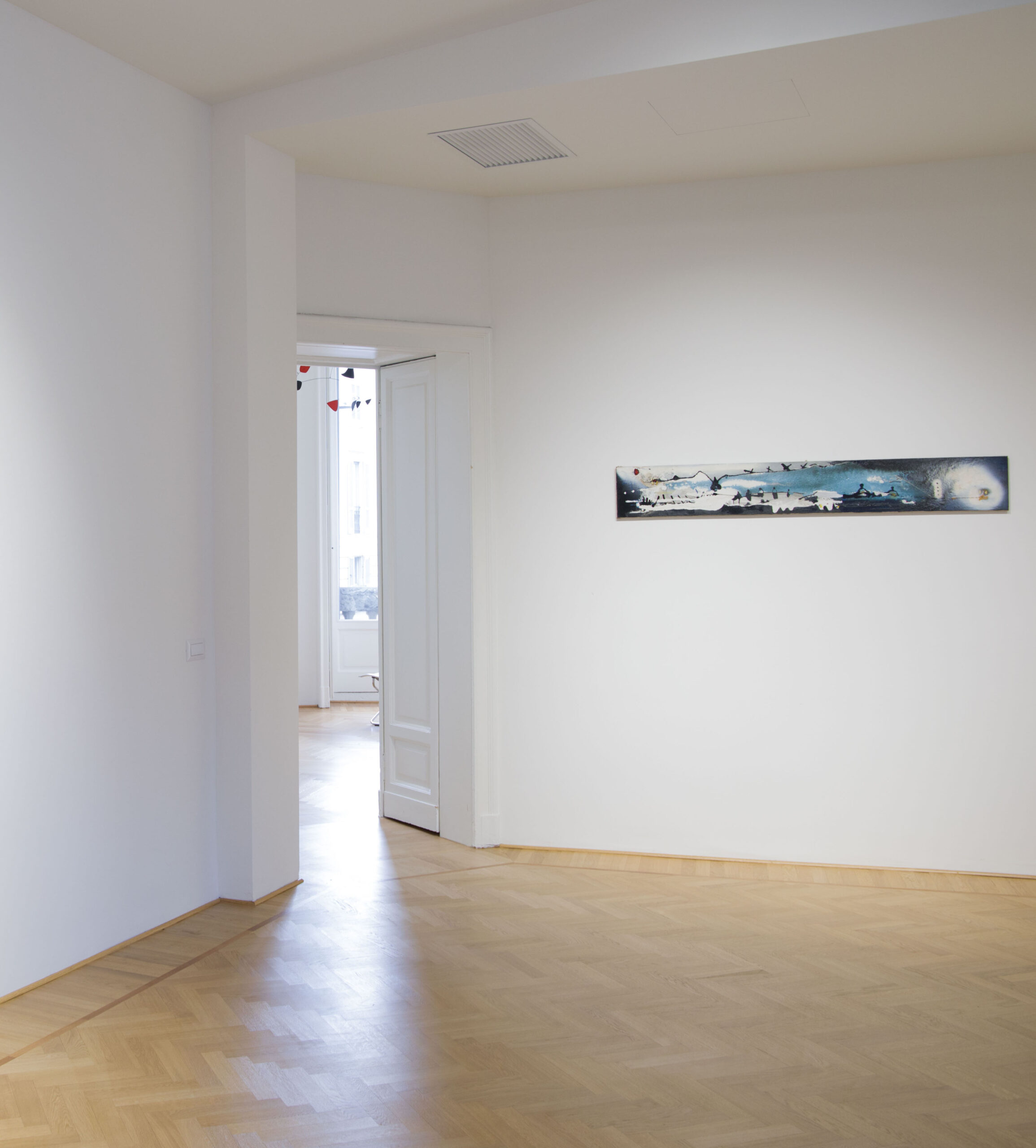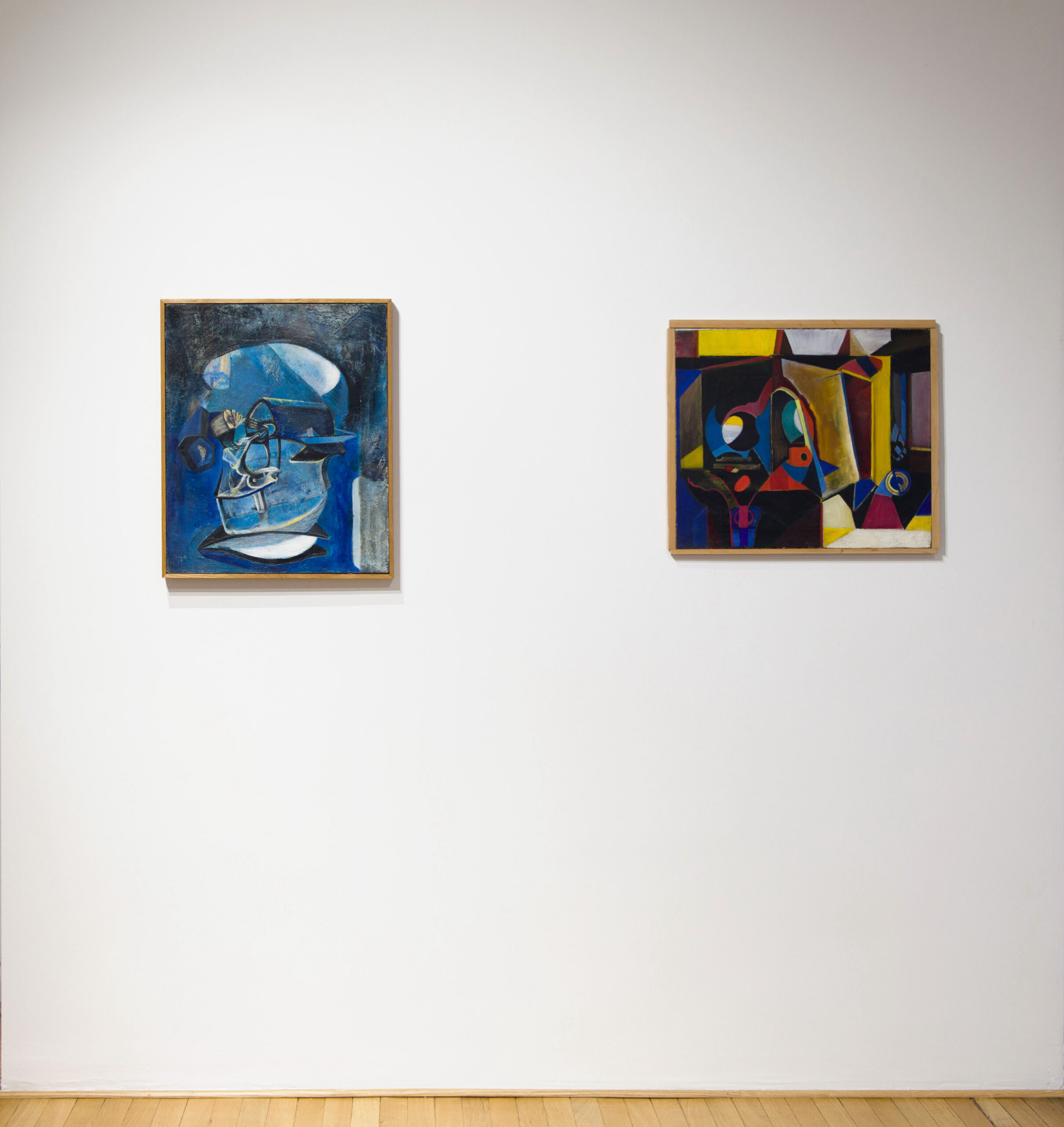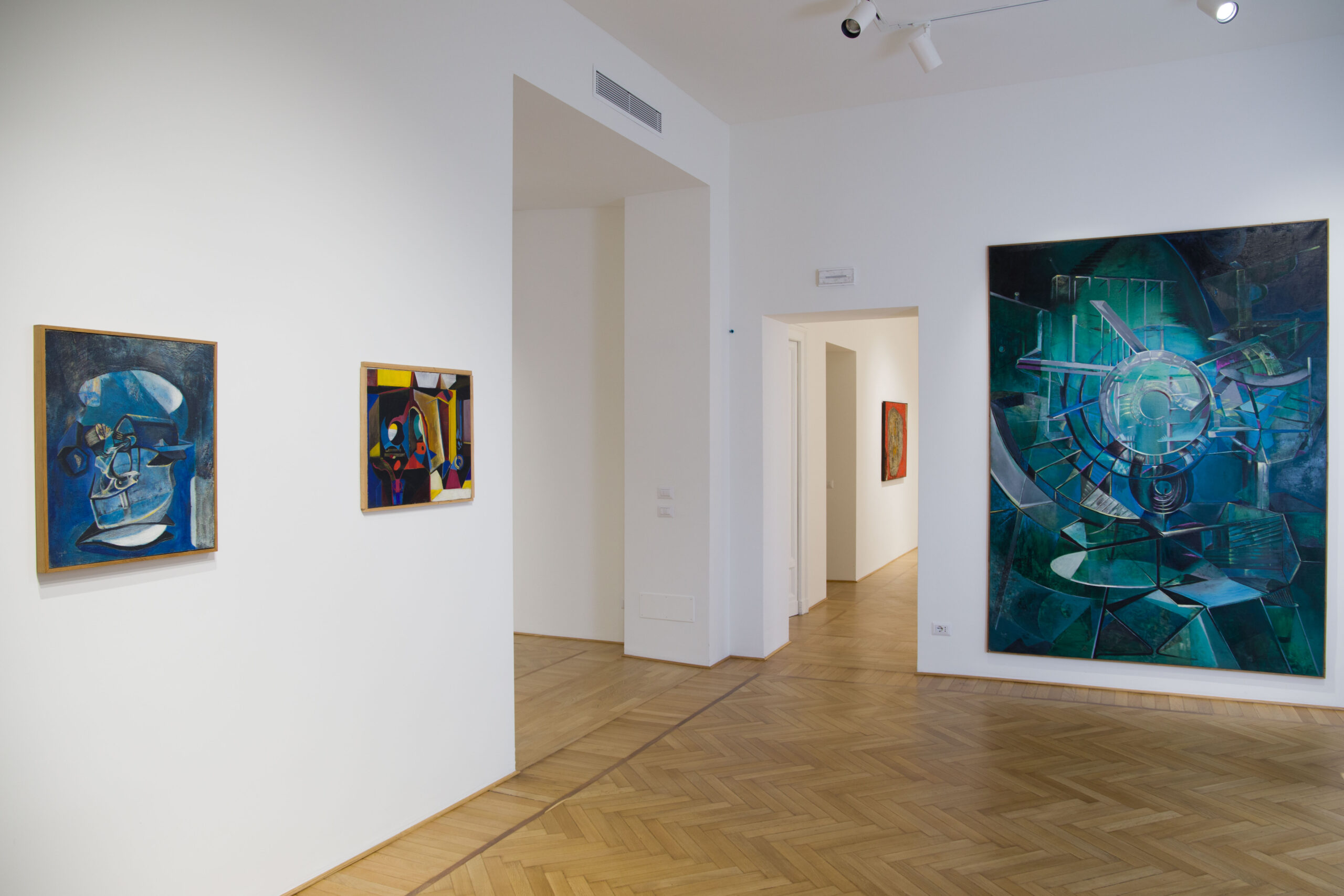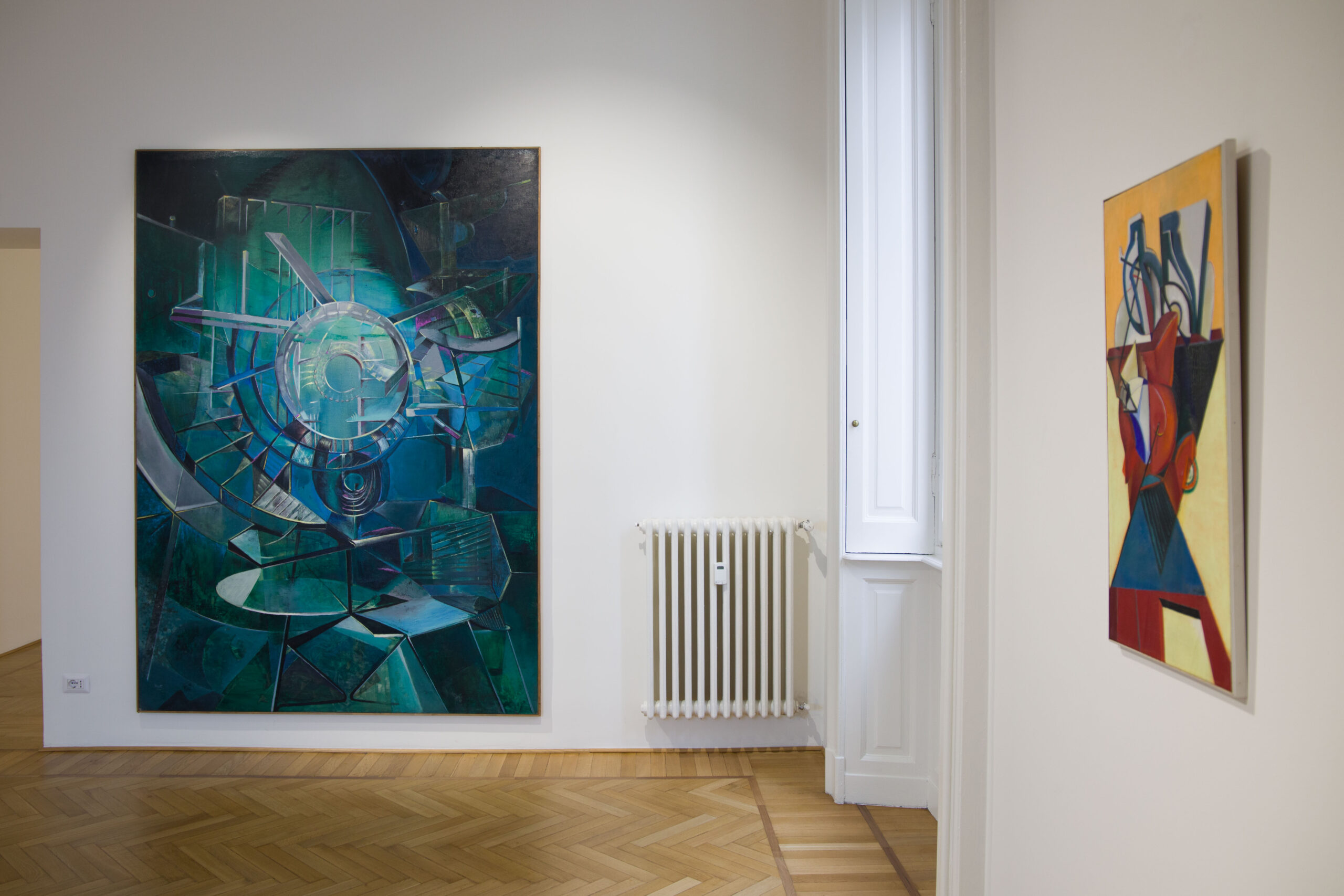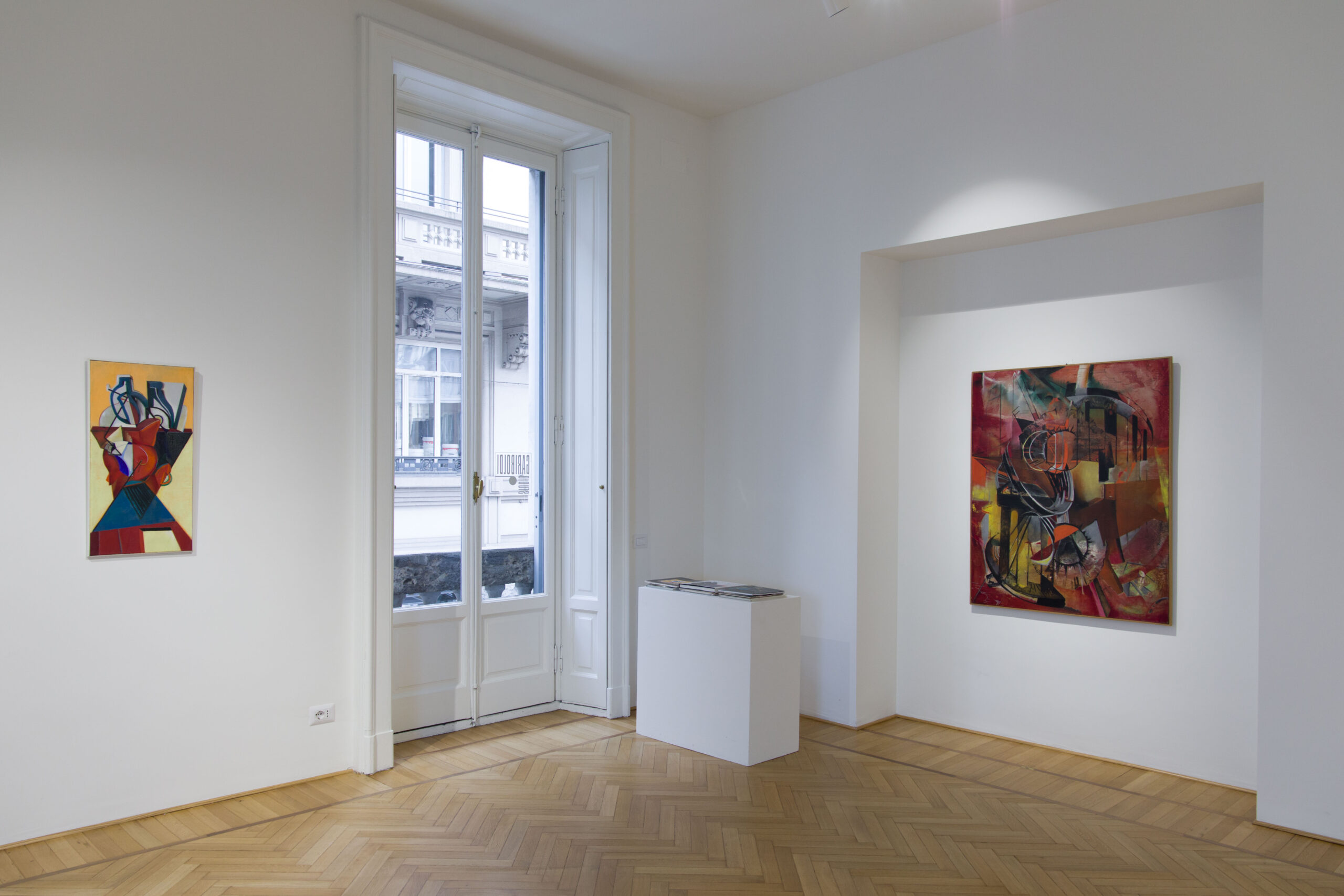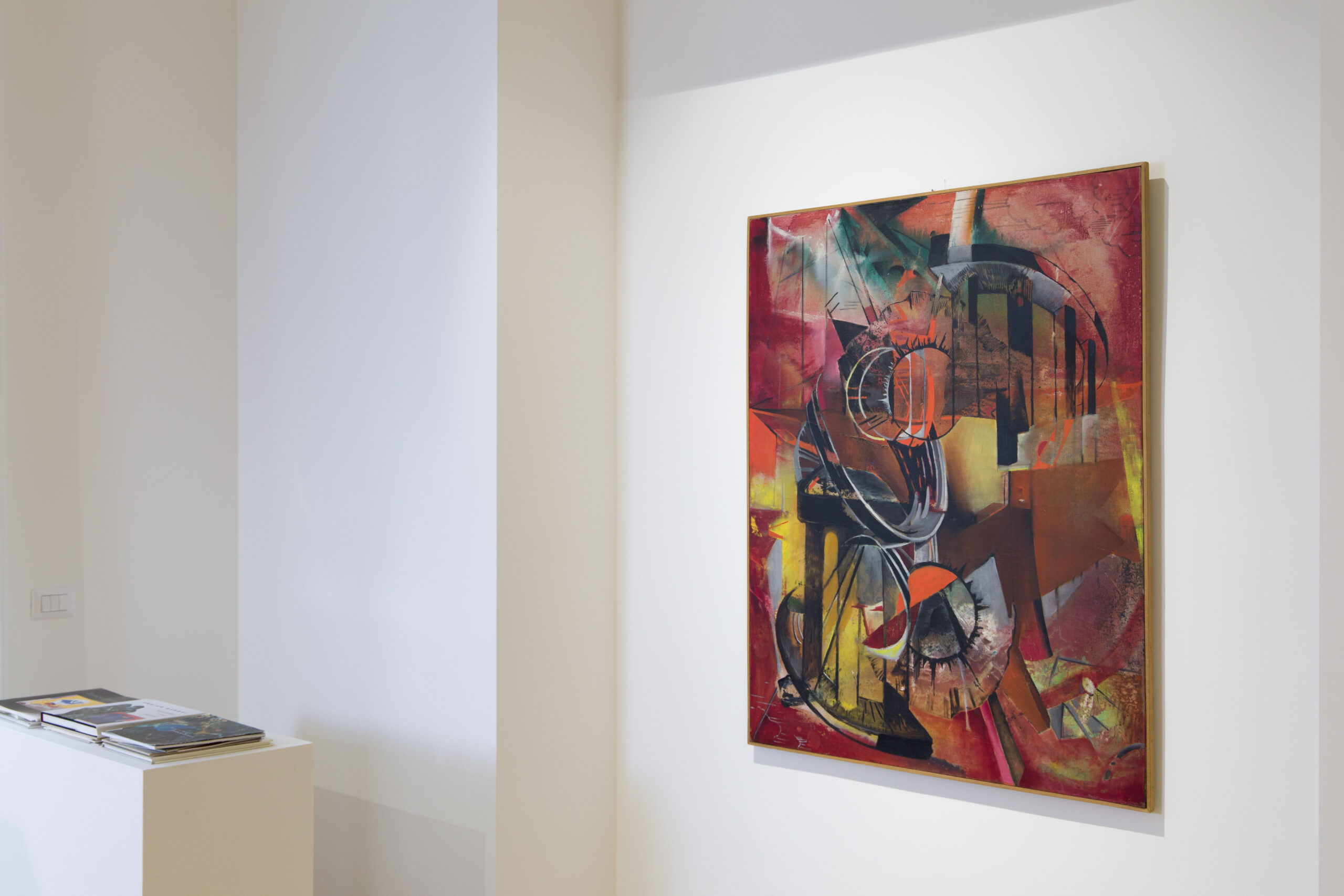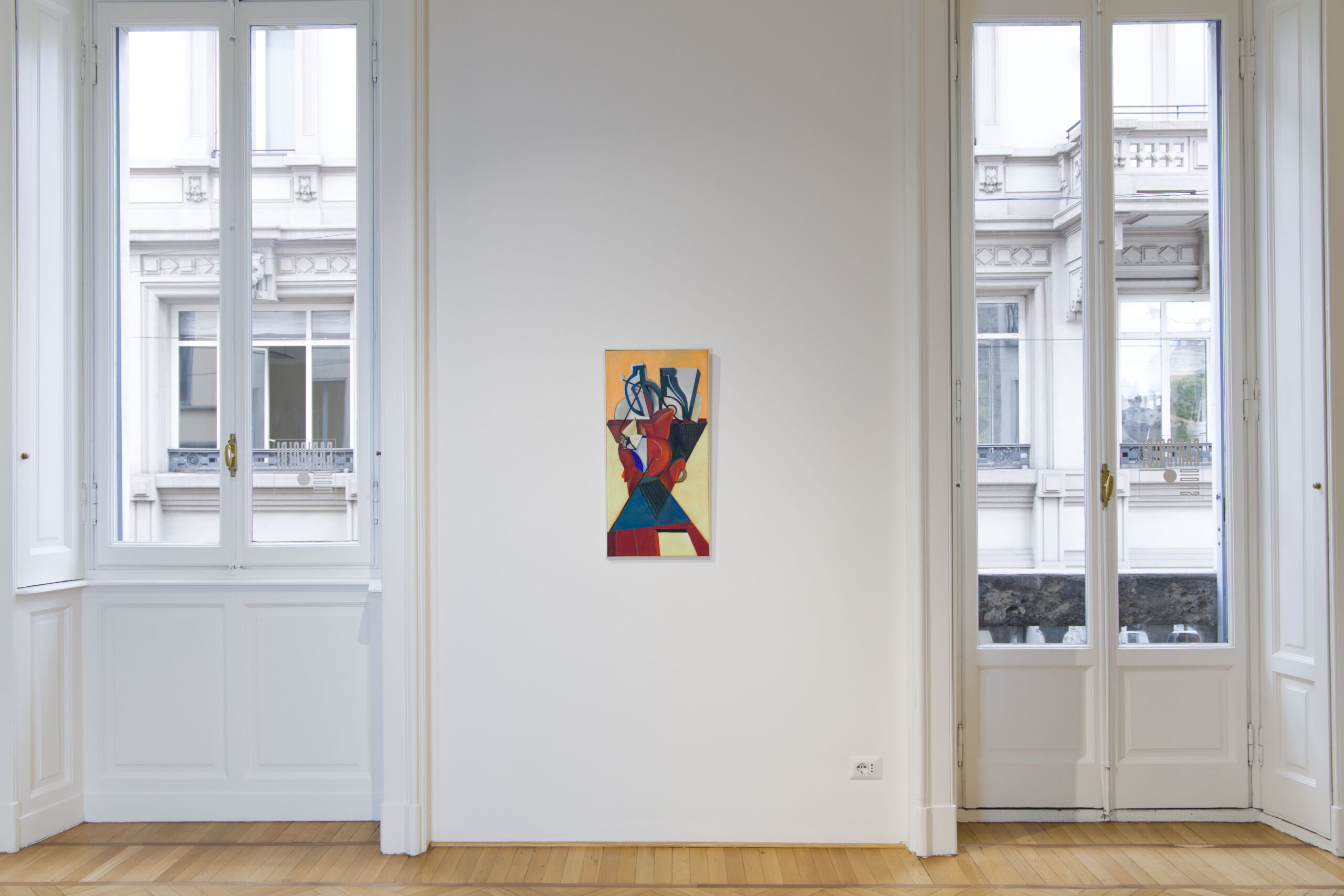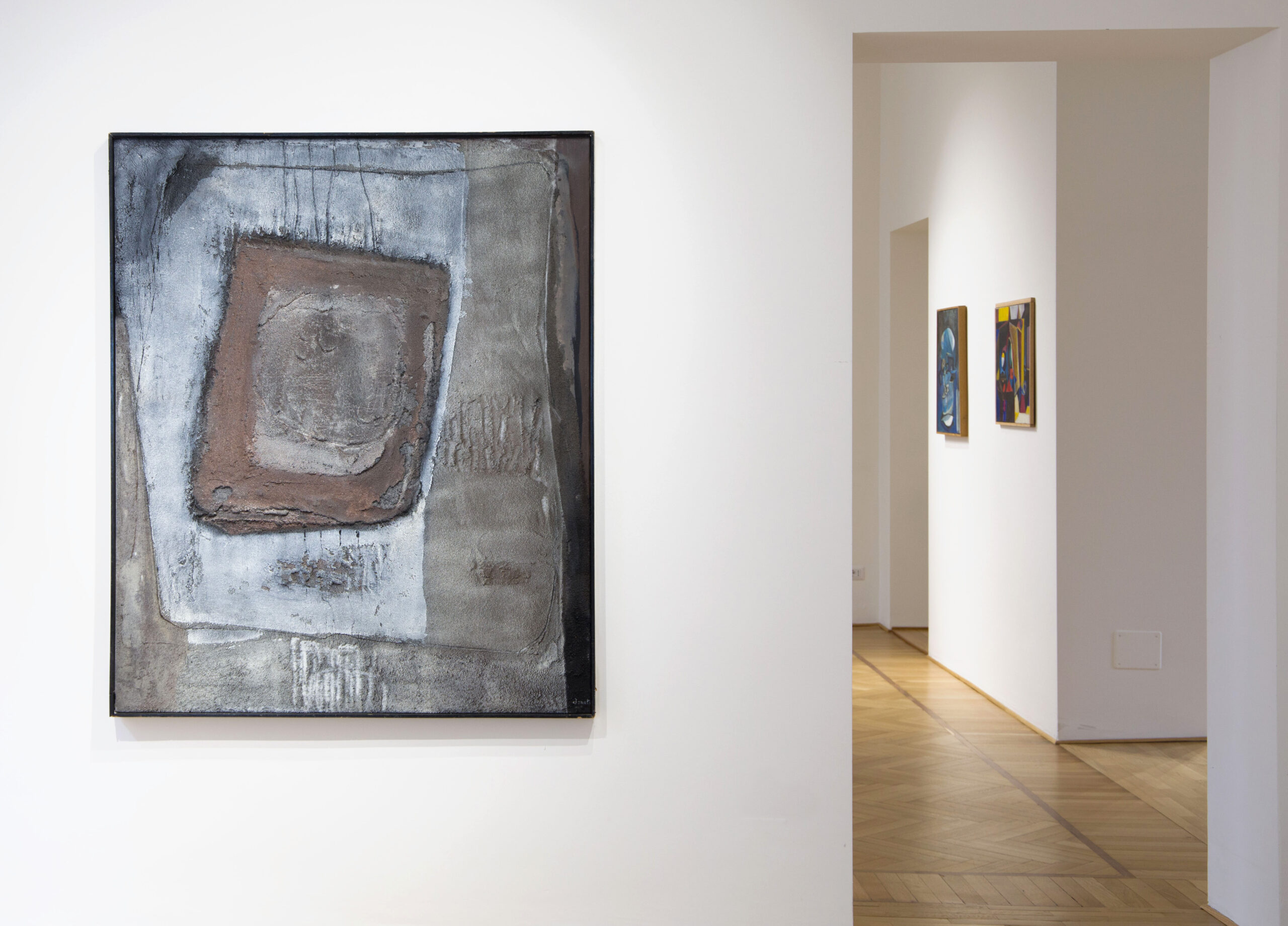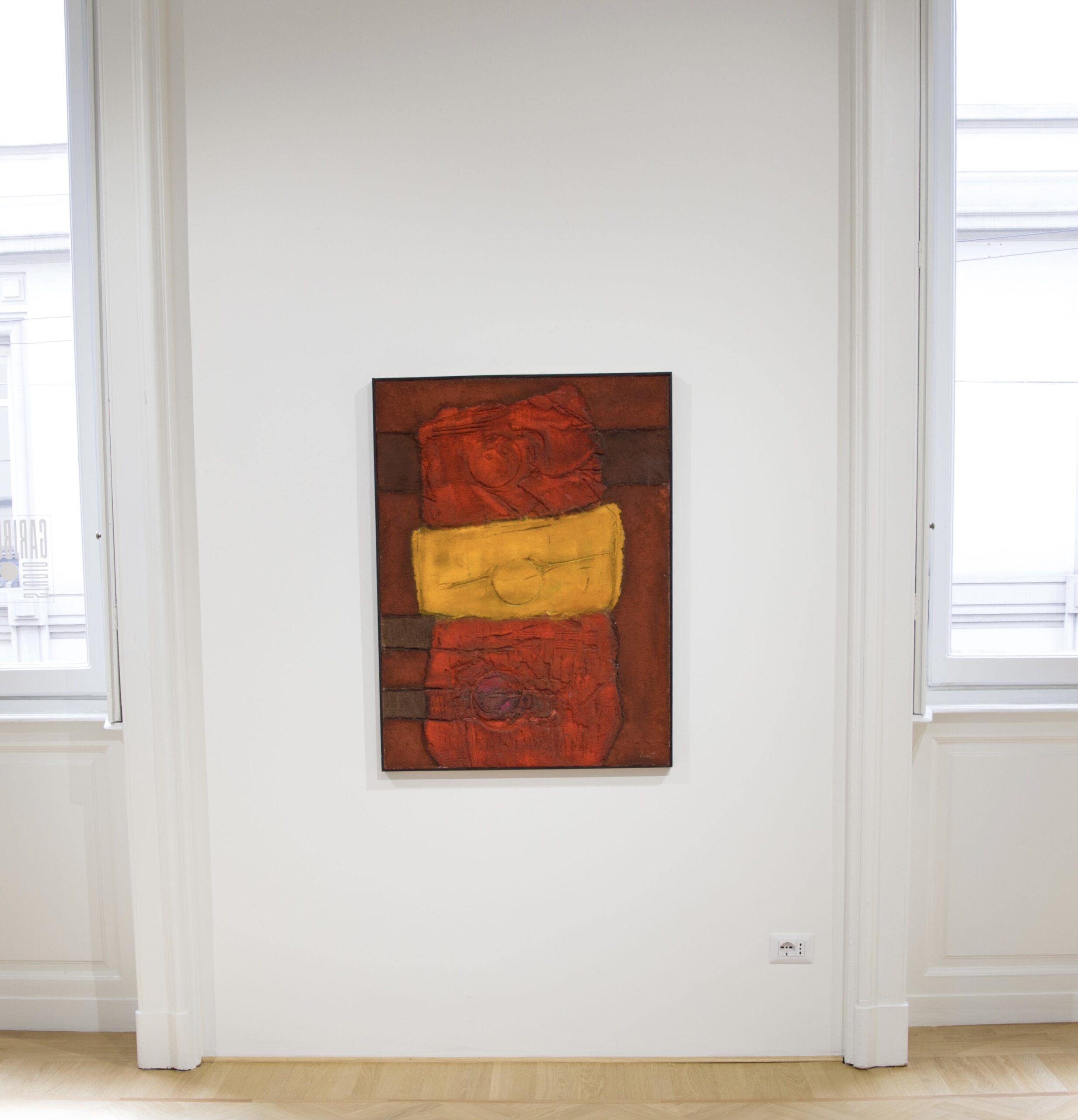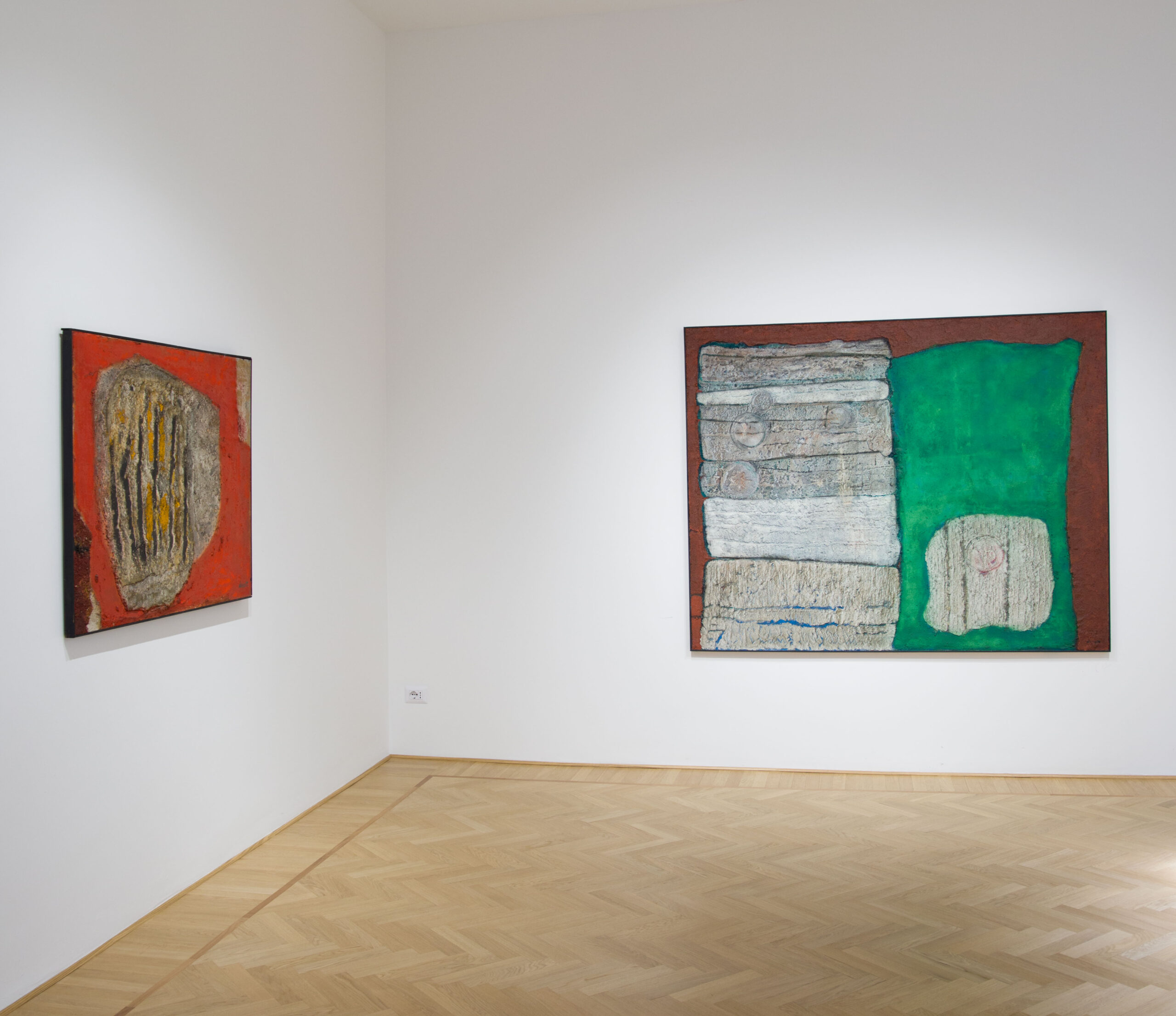ENRICO DONATI
New York Parigi Milano
The solo exhibition dedicated to ENRICO DONATI crosses the most important phases of the artist’s creative journey between New York, Paris, and Milan, focusing on his unique and original style developed during the evolution of Surrealism.
Enrico Donati (1909 – 2008) is an Italian American Surrealist painter. In 1944, he had his first American solo exhibition at Georgette Passedoit’s gallery. During his time in New York, he caught the attention of the poet and writer André Breton, who offered him another exhibition in the USA, at the Place Gallery in Washington. The exhibition was a success and the beginning of other important exhibitions and a series of works with his new great friend Marcel Duchamp (photo 3). Breton had no doubts, Donati was a Surrealist, and in 1945 consecrated him by dedicating an entire chapter to him in the book Le Surréalisme et la peinture.
He would remain a surrealist even when he met Lucio Fontana who involved him in the initiatives of the Spatialist group.
FIRST ROOM
The works on view in the first room of the gallery are from the 1950s. In the canvases of this period, randomness becomes a fundamental element of the artist’s creative approach, within which the image takes shape.
On the left Our Nina- Ningir sou God, 1959, is part of the first group of works produced in the mid-1950s, containing semi-geometric surfaces in dense blacks, greys, and whites. The canvases recreate arid lava fields or lunar surfaces. Our Nina – Ningir sou God retains a surrealist quality of vast unexplored dream lands.
On the right in the picture, the canvas Barometro, 1951-52, is part of the series of paintings started in 1949 in which the artist was focused on gestural work. The new process of Donati’s experimental work was through the use of special materials, such as liquefied tar and turpentine, which, once cold, solidify, becoming as hard as enamel.
SECOND ROOM
The first three canvases in the second room were created in the second half of the 1940s.
In this creative phase, Enrico Donati feels the need to regulate the artistic realization with the help of a syntax based on geometry. Creation is no longer totally at the mercy of the surreal imagination.
On the left Le tour de L’Alchimiste (vue d’en bas) is part of the cycle of works begun in 1947 in which Donati presents square and triangular forms on canvas.
The artist creates a more elaborate structure, a composition where colour accents set up unusual spatial visions.
In the work Retina di casa animata, in the picture on the right, Donati elaborates a geometric figuration in which nothing is left to chance. The colours, no longer free to escape the confines of the forms and mingle with each other, are forced into well-defined fields.
Scenografia a Pompei from 1950, right in the picture, partly shows a Cubo-Futurist sensibility. Donati, tired of the excessive romanticism and colourful vivacity of his works, began to impose a certain geometric rigidity on his artistic expressiveness. No longer floating figures and colourful nuances, but square and triangular shapes that clearly separate colours. Perspective loses its hegemony over space and is reduced in depth, allowing the elements of the composition to emerge on the surface.
In the painting Pendolo, 1948-1949, on the left in the picture, one can glimpse the shapes of objects that are juxtaposed on various levels, creating a depth that introduces the viewer to the third dimension. The painting is dominated by a complex geometric assemblage. The dull, uniform hue of this environment accentuates the colourful interlocking of the shapes that stand out in yellows, reds, and blues.
THIRD ROOM
In the third room there are four canvases produced in the 1960s.
The work Sunstone from 1960 is part of the series called “Moonscapes” by Marcel Duchamp precisely because these works, with their rough surfaces, present us with images of arid and cold earth that closely resemble lunar landscapes. The colour palette favours blacks, greys, blues, and whites.
Red Reef dated 1965, on the other hand, is part of the group of works produced from the second half of the 1950s as part of the “Sargon” series (dedicated to the Mesopotamian king of the 2000s BC). The artist, still tied to the rough and thick surfaces of the early 1950s, extended this material consistency to larger surfaces and, above all, abandoned monochrome to give way to colour, linked to a range of earthy tones.
In the early 1960s, the theme of the “fossil” gained his attention, becoming an iconographic synthesis in the “Fossil Cycle”.
In 1949, the artist had found a smooth stone on the beach at Dover in Barbados that had caused him a strange vibration, in view of which he had suspected that a fossil was hiding inside. Donati decided to open the stone in 1960, he was surprised founding a fossil inside it that resembled the images he had been painting for some years.
The fossil carries the whole cycle of creation, destruction, and rebirth within it.
Nature has destroyed the life it once was and has reincarnated it in a new life that will have perpetual existence.
(Enrico Donati, Peter Selz, The pocket museum, Parigi 1965)
In Hopi Wall, azurite blue and cobalt green join the terra cotta colour and multiple greys. The colours and textures thus reinforce each other. The shapes become wider and thicker, more defined. These marks on the canvas are placed in the pictorial space with the sensitive and elegant confidence of an unerring eye and hand.
The painting Fossil series ‘3000 BC’, is the iconic representation of a fossil silhouetted against a vermilion red monochrome background.
Enrico Donati by his own admission has always done what he felt like doing, surrealist provocations, moonscapes, constructivism, abstract expressionism, totems, and even perfumes. He has always had fun and reinvented himself “I have experienced extraordinary things and I think I express joy and fun in my work”, so he said in an interview with Irene Bignardi in 2007.
“I personally believe more in being an individualist than being a follower. And also when I participated in the Abstract school of New York and when I participated in the Surrealist school I wanted to have my own style, my own idea. I was trying to be an individualist. I don’t know if I succeeded but at least I tried”
from “Oral history interview with Enrico Donati,1969 September 9”
Smithsonian Archives of American Art


